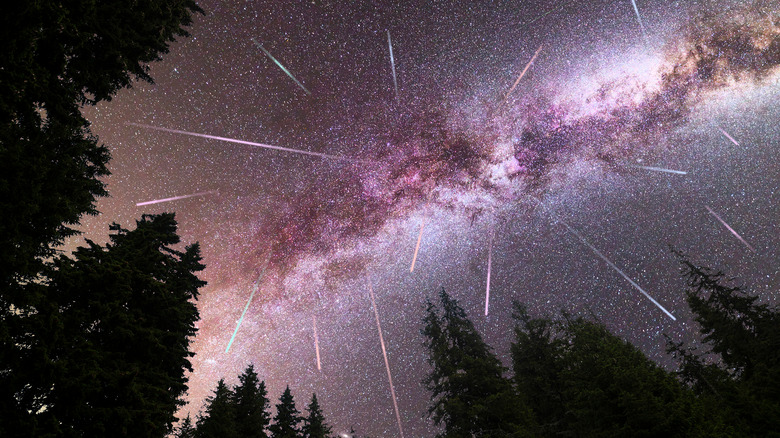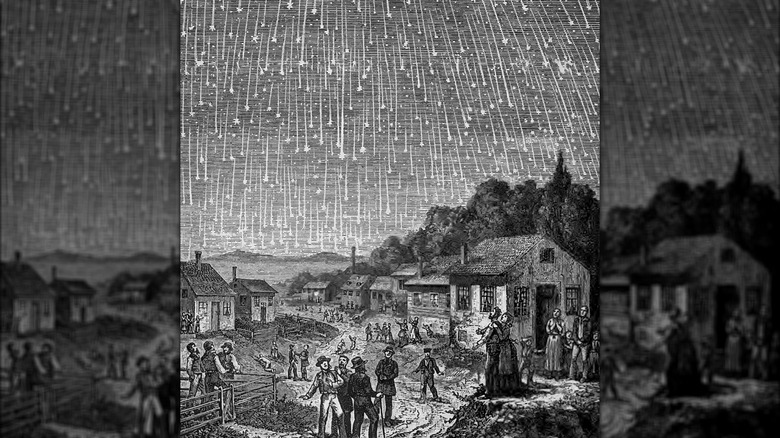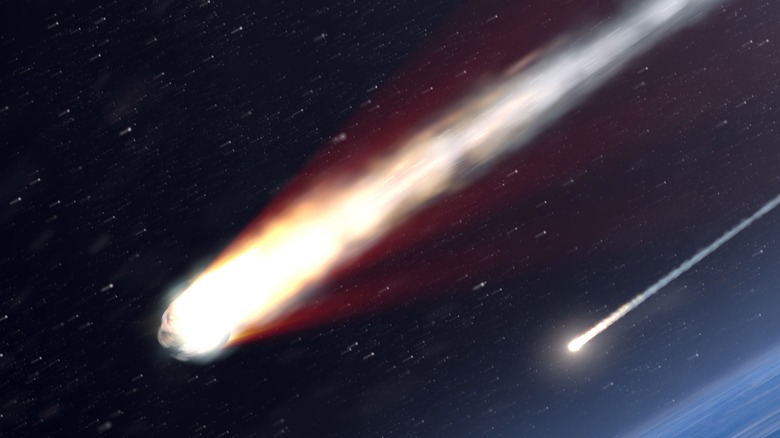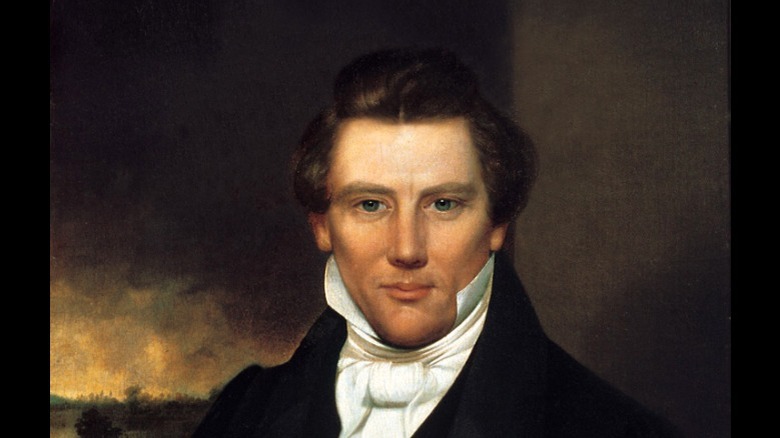The 1833 Meteor Shower Led Many To Both Scientific And Religious Understanding
From time to time, the skies will give us a special treat. For example, in the early winter of 2023, a rare green comet crossed through this section of the solar system, giving us a spectacle that was last seen during the time of the Neanderthals. Less frequent than green comets are meteor showers, and they happen, predictably, a few times per year. Know when and where to look, and if you're lucky, you can see a few fireballs per minute, streaking across the sky, as EarthSky reports.
Over the millennia, astronomers and historians realized that certain meteor showers are predictable and that they emerge from a certain point in the sky. However, one particular meteor shower — the Leonids of 1833 — was so magnificent (some would say downright terrifying) that it fundamentally changed our understanding of how and why these things happen, as Space reports. And at least one religious movement took the meteor storm, as these things are called, as a sign from God and solidified the movement's belief that it, and its leader, were divinely ordained.
The 1833 Leonid Meteor Storm
The rock that is this Earth has been traveling across the universe since well before we humans arrived and started writing things down, and it will continue to do so long after we've left. That means that annual meteor showers, such as the Leonids, the Perseids, and the Orionids, among others, have been occurring annually for untold millions of years.
Regardless, the Leonid meteor storm — not shower, and you'll soon read why — was one for the record books. In a typical Leonid meteor shower, such as the one that EarthSky predicts for November 3 through December 2, 2023, stargazers who know where and when to look, could observe about 10 to 15 meteors per minute. By comparison, during a meteor storm, such as the one of 1833, thousands of streaks of light can fall per minute. One particular night, November 12, 1833, according to Space, an estimated 240,000 fell. It was visible in the Eastern United States, and though many Americans were sound asleep at the time, many were wakened by the commotion, as crowds gathered to watch the sky falling before their eyes. "The sky was scored in every direction with shining tracks and illuminated with majestic fireballs," noted one observer, via NASA. Unfortunately, the event predated videography by over a century, so there were no videos of it. However, sketches, paintings, drawings, and engravings of the event exist, and a few have been compiled in this video, via YouTube. Clearly, those who witnessed it were treated to a once-in-a-lifetime sight.
Scientific Understanding Of Meteor Showers
As mentioned previously, annual meteor showers were a thing long before humans started studying them. However, the 1833 Leonid event revealed a fact about meteor showers that had previously eluded us (or at the very least, hadn't been given much thought). Specifically, the sheer amount of the meteors, and the accounts of untold numbers of people who observed them, prompted a change in our understanding of the phenomenon, as the Library of Congress reports.
"As the cause of 'Falling Stars' is not understood by meteorologists, it is desirable to collect all the facts attending this phenomenon, stated with as much precision as possible," wrote astronomer Denison Olmsted to the New Haven Daily Herald. Specifically, Olmsted was seeking accounts from other observers, in what the Library of Congress notes was an early attempt at crowdsourcing scientific data.
What Olmsted was able to suss out, thanks to his and other observers' data, was that the "falling stars" originated from a point in the constellation Leo (giving birth to their eventual name, the Leonids), according to the Linda Hall Library, and that the radiating point moved with the stars, suggesting that these "falling stars" originated from space. Eventually, according to Space, we would learn that some meteor showers, the Leonids included, result when the Earth passes through a comet's tail.
The Religious Connection
Though the 1833 meteor storm advanced our knowledge scientifically, there was another field that also derived great meaning from the event: religion. Or more specifically, the Church of Jesus Christ of Latter-Day Saints.
According to a narrative provided by Ronald P. Millett via Latter Day Saints Magazine, at some point before November 1833, when the Leonid meteor storm took place, the movement's founder Joseph Smith (above) supposedly uttered a prophecy about it. "Forty days shall not pass, and the stars shall fall from heaven," he allegedly said during a sermon.
Supposedly on the 39th night after the prediction, Smith and a companion were at the home of an unbelieving skeptic. Then the meteor storm took place, "and the countenance of the new spectator was plainly seen and closely watched by Brother Hancock, who said that he turned pale as death and spoke not a word," said Philo Dibble, another figure from the early days of the Latter Day Saints movement.
Smith himself also wrote of the event. "I arose, and to my great joy, beheld the stars fall from heaven like a shower of hail stones; a literal fulfillment of the word of God as recorded in the holy scriptures as a sure sign that the coming of Christ is close at hand," he said, via the Joseph Smith Foundation.



